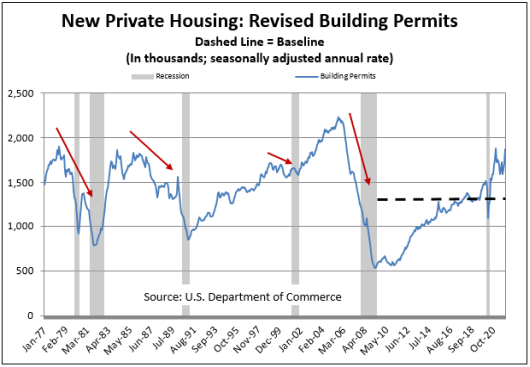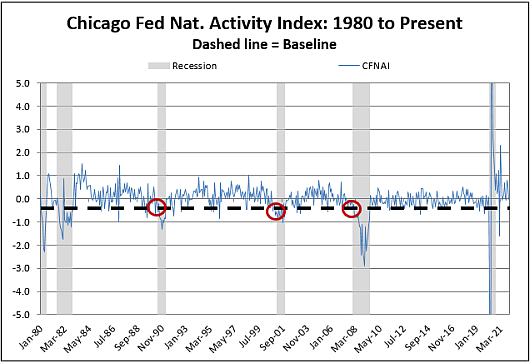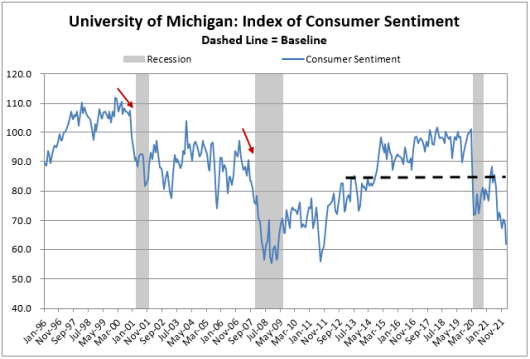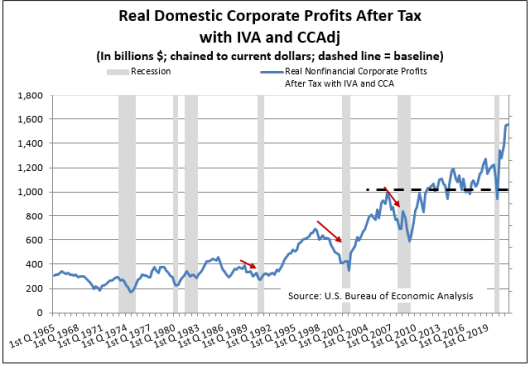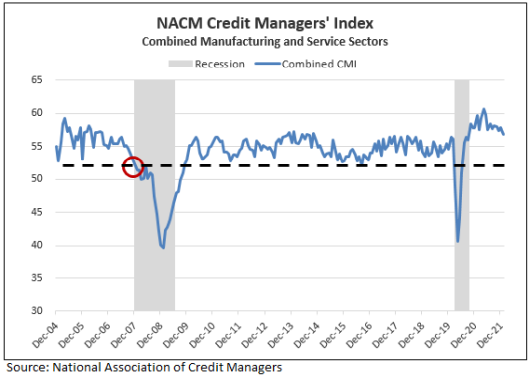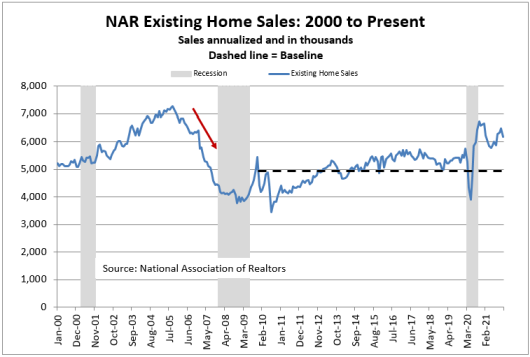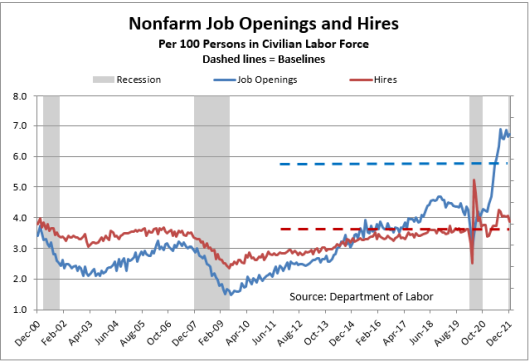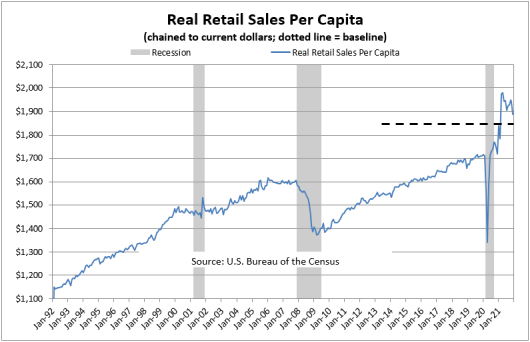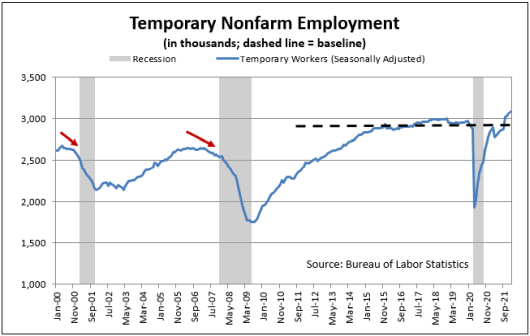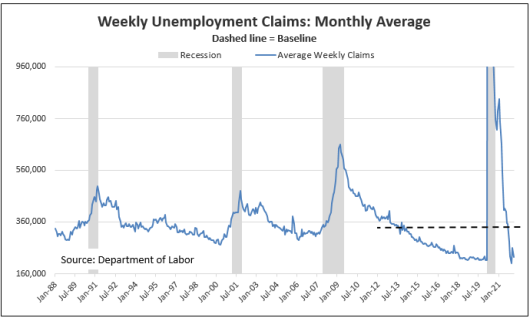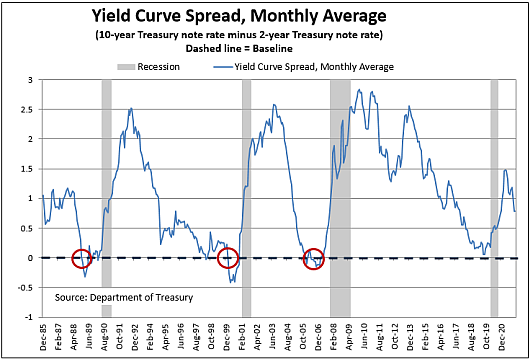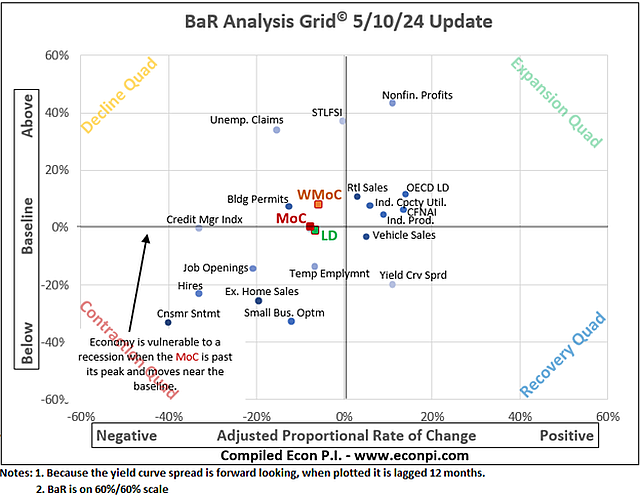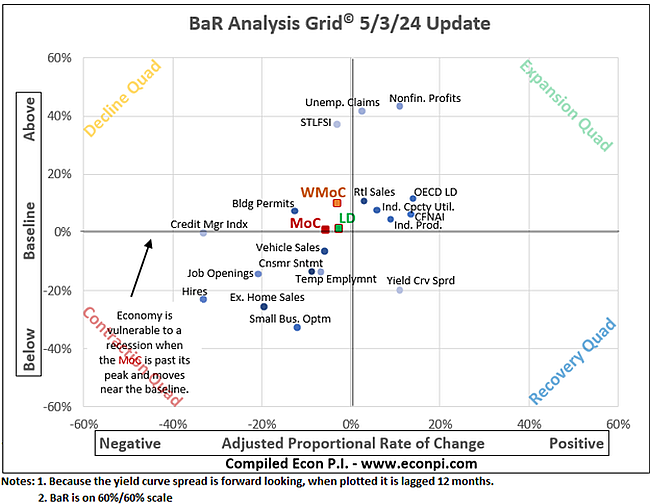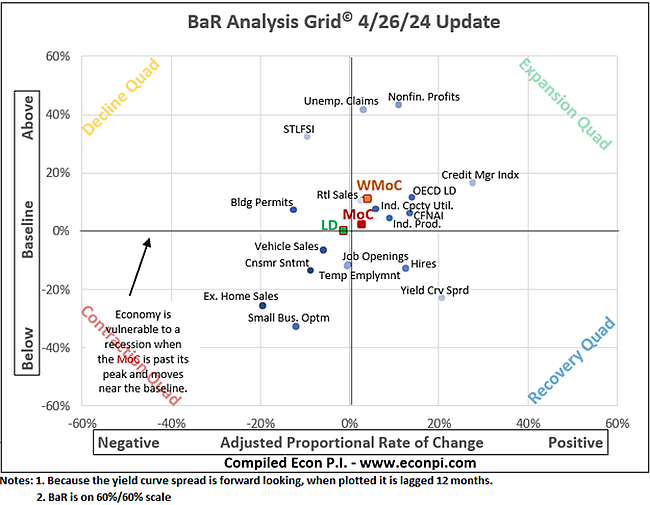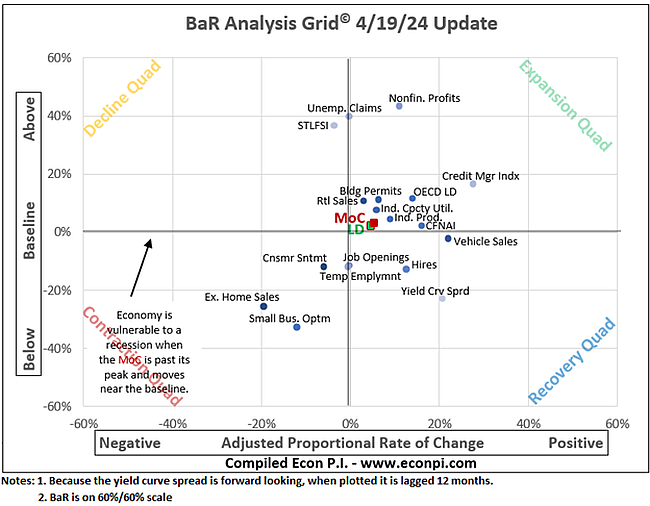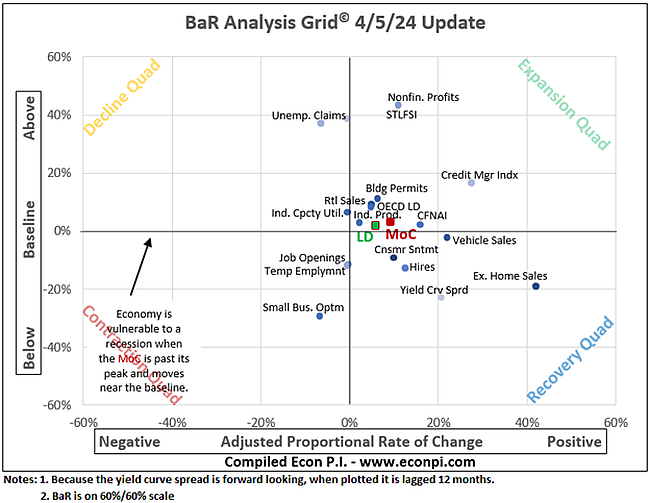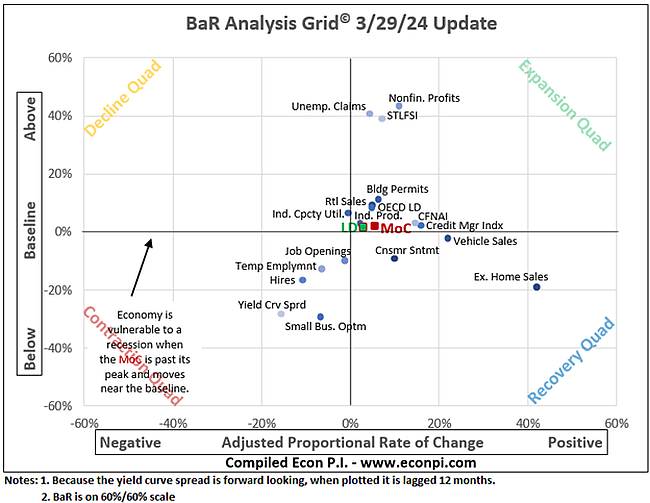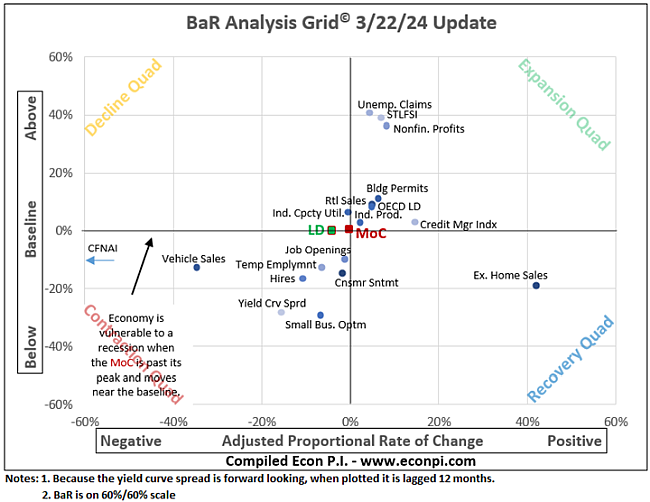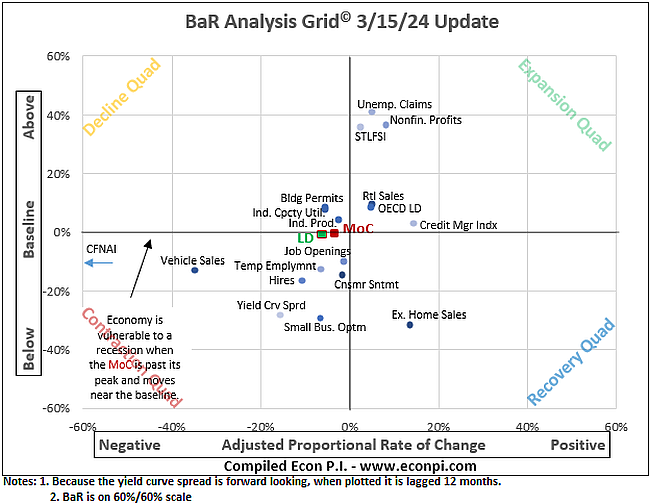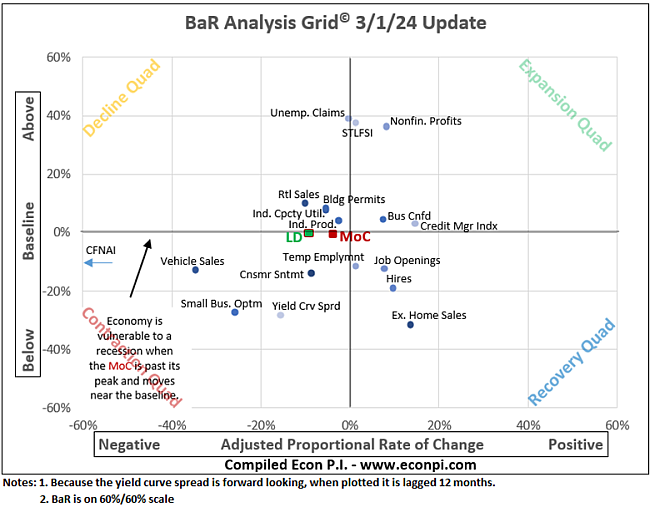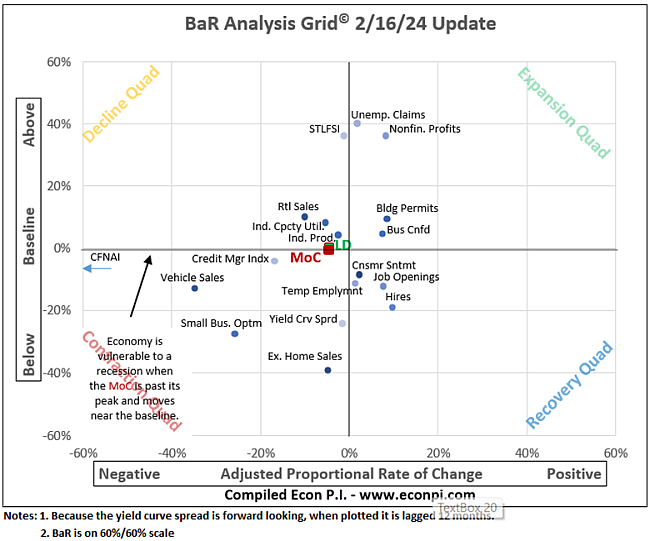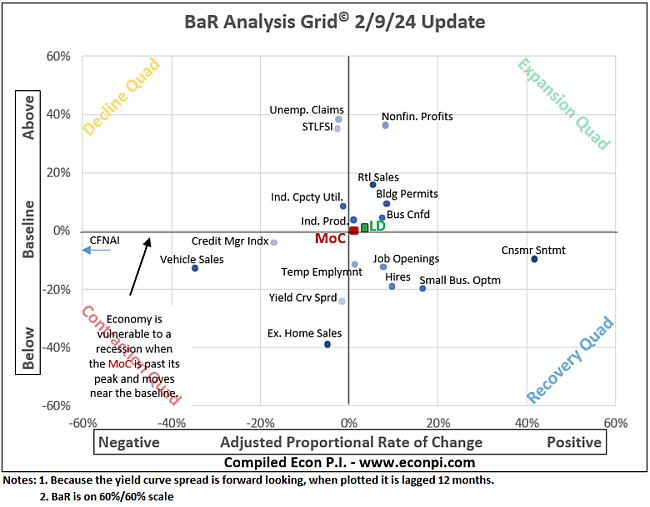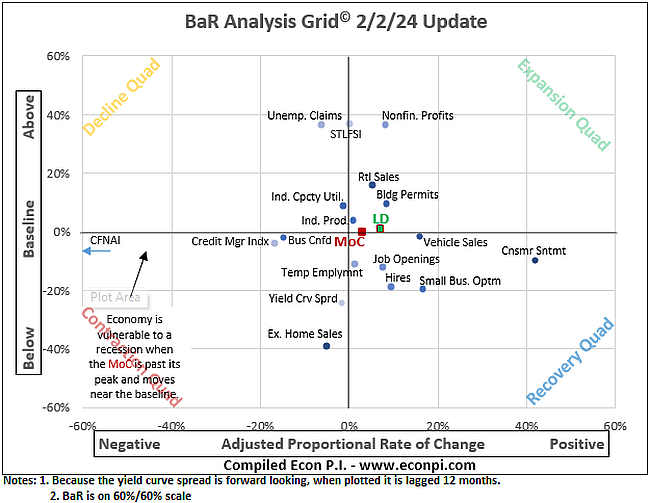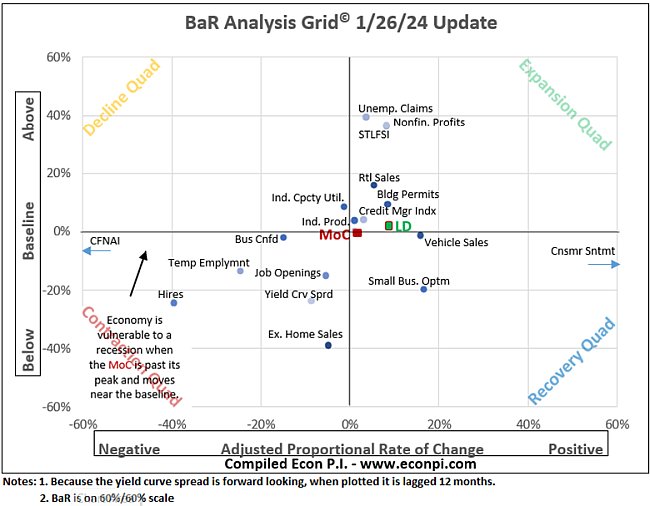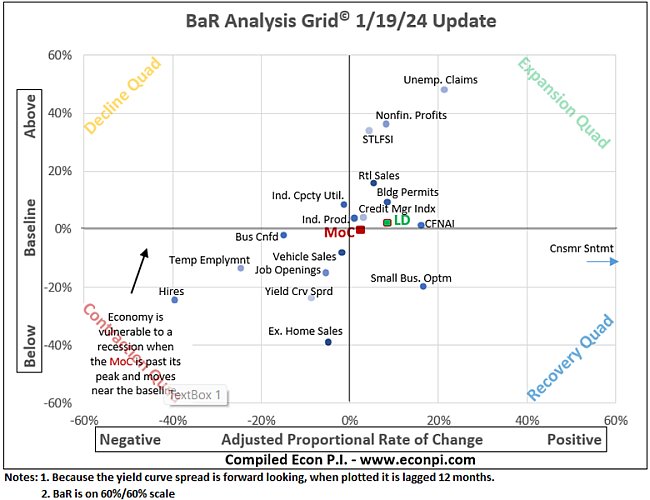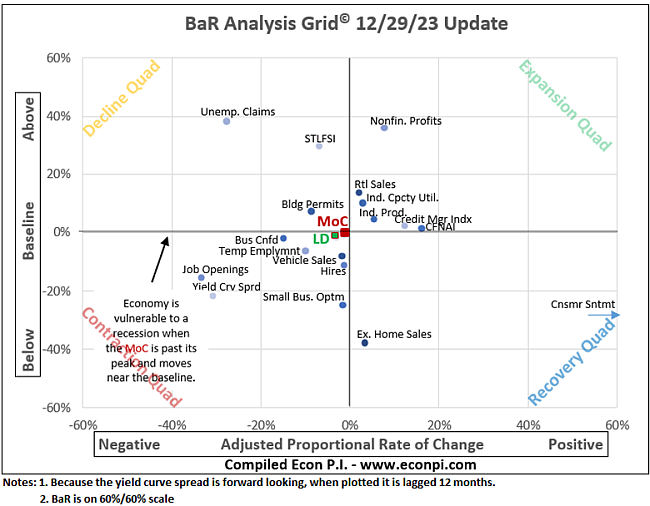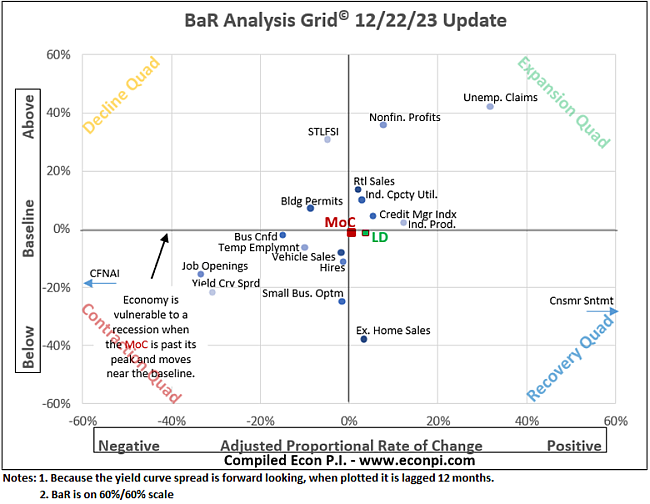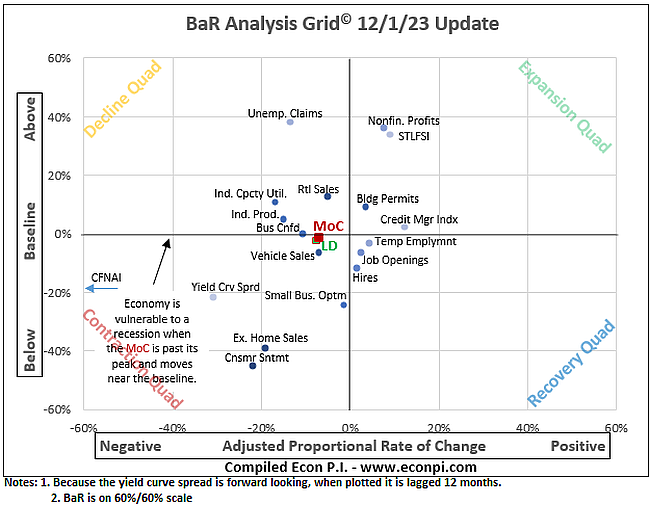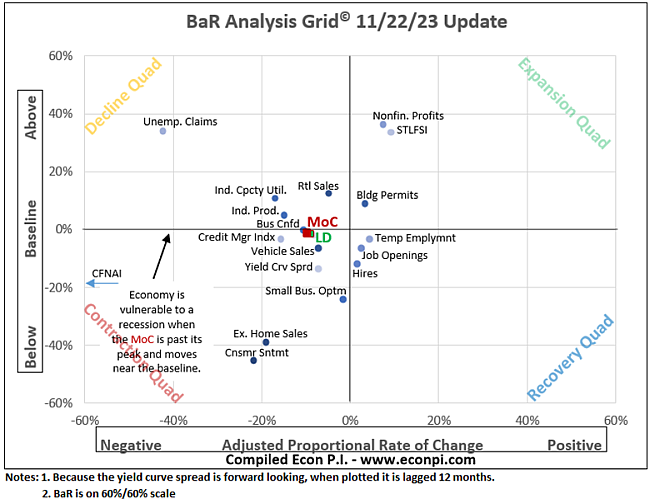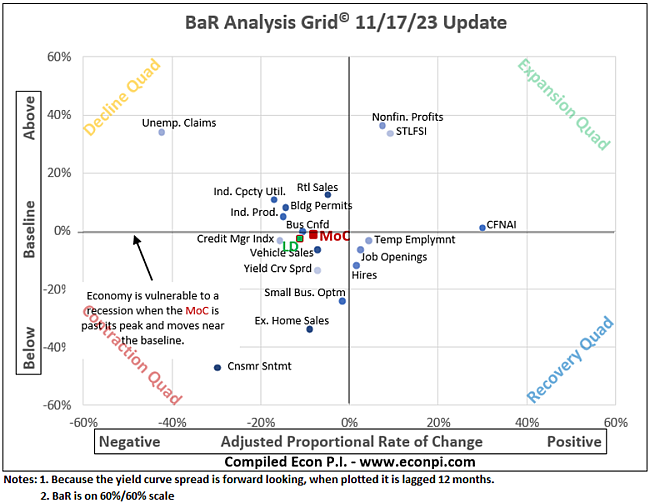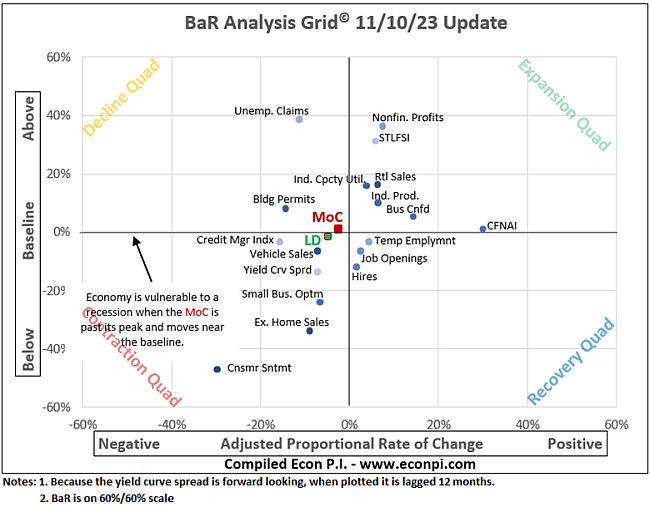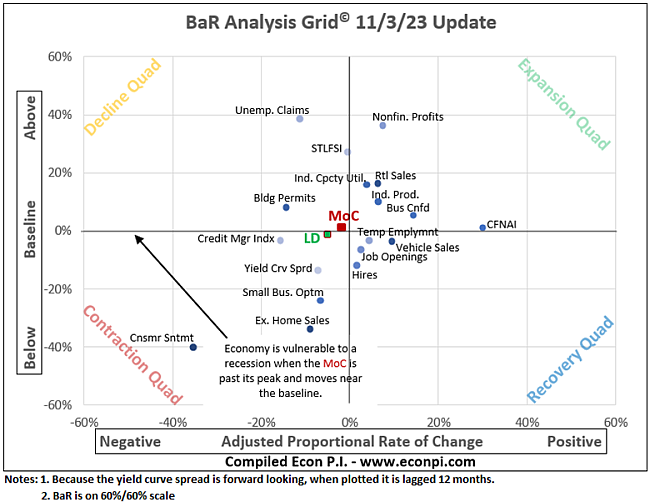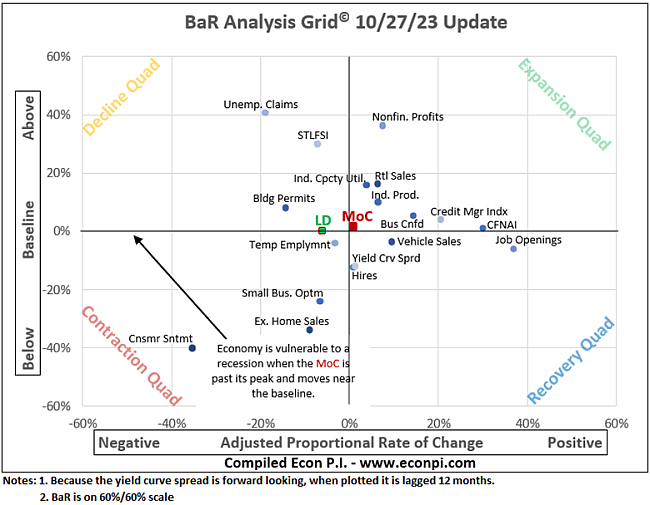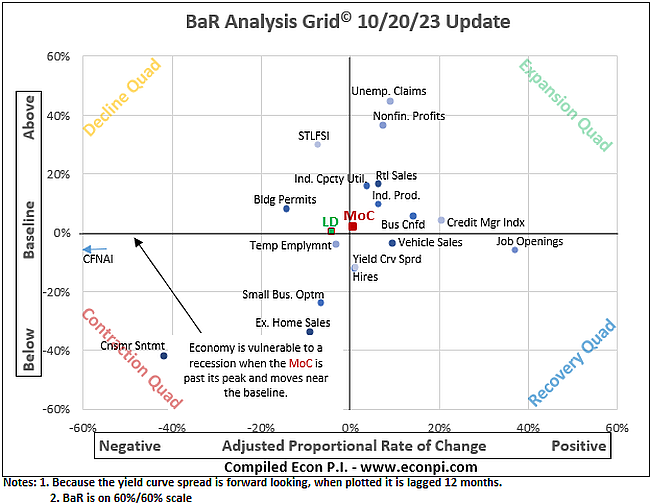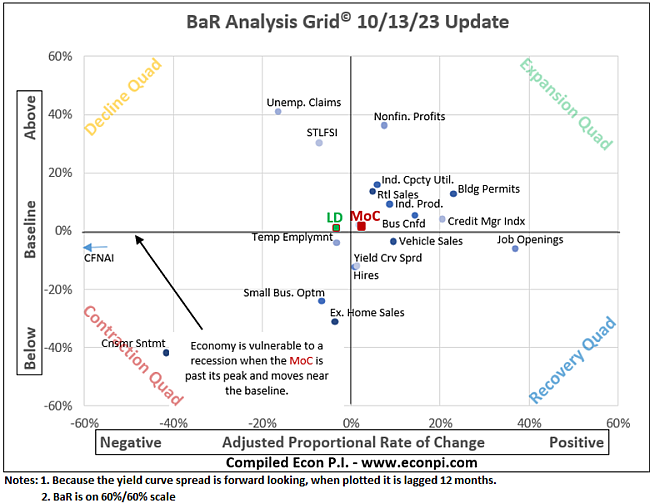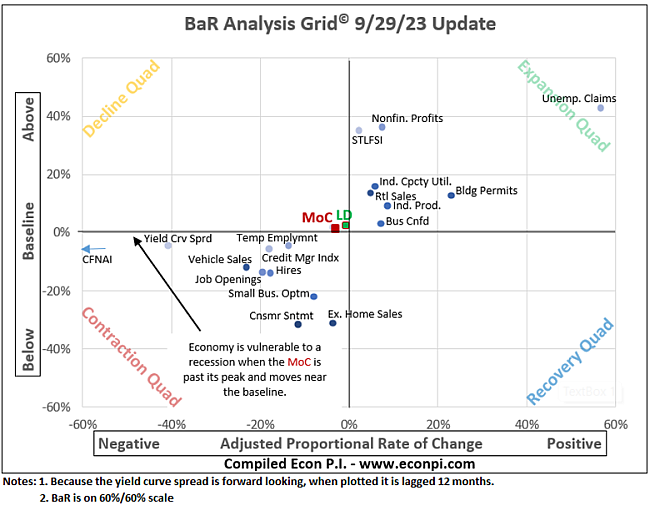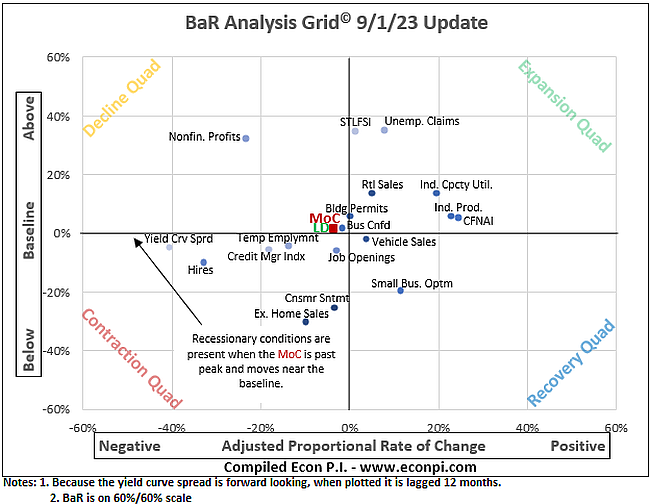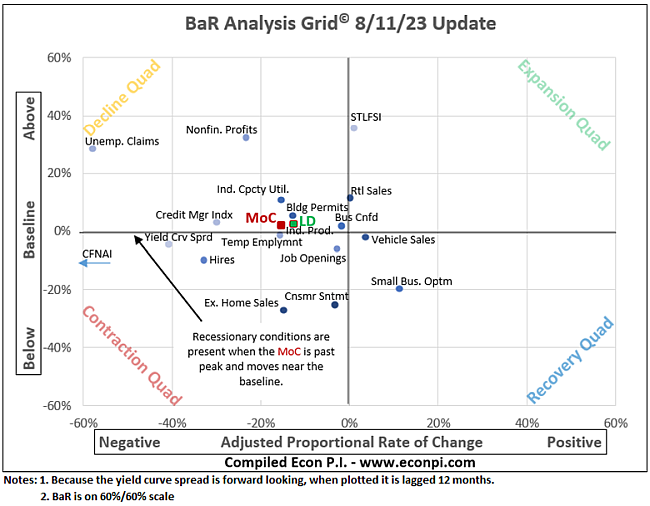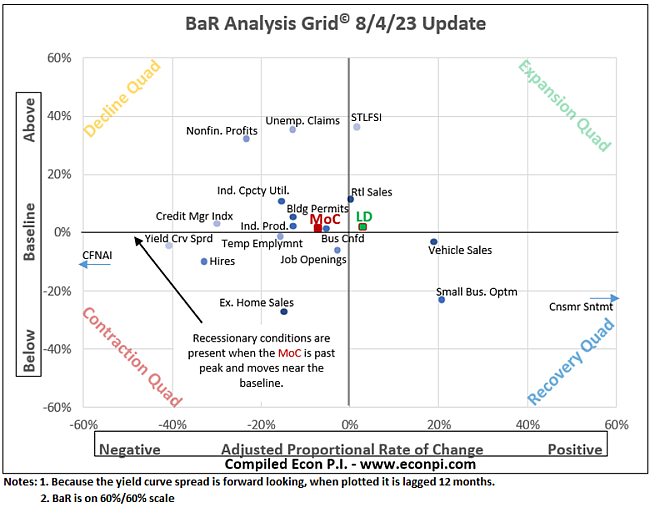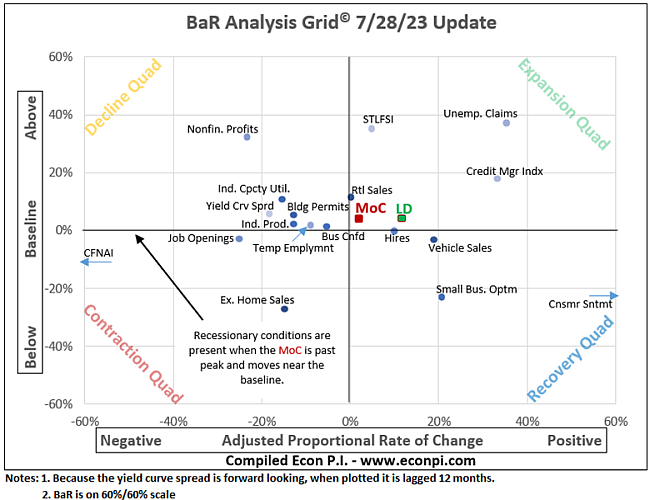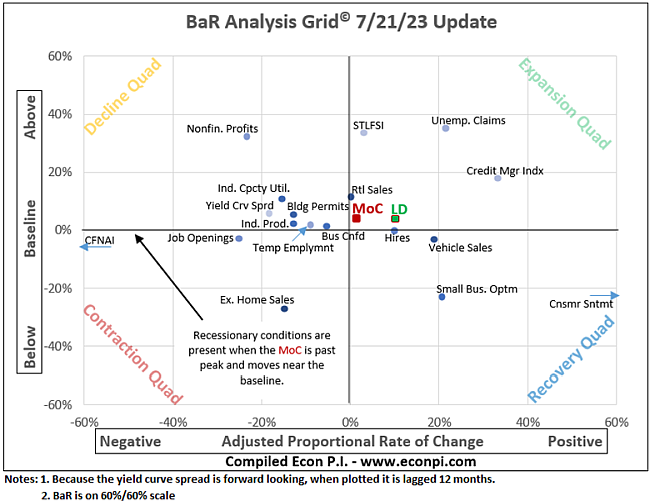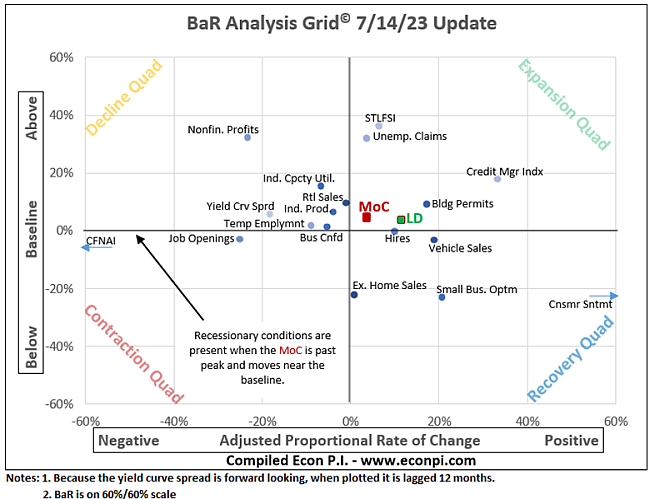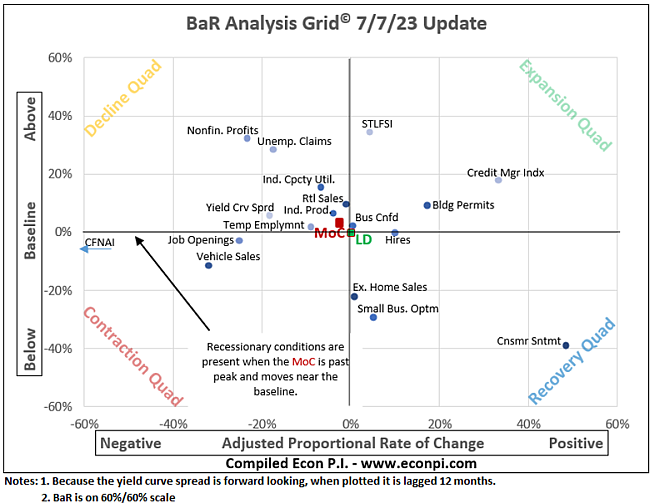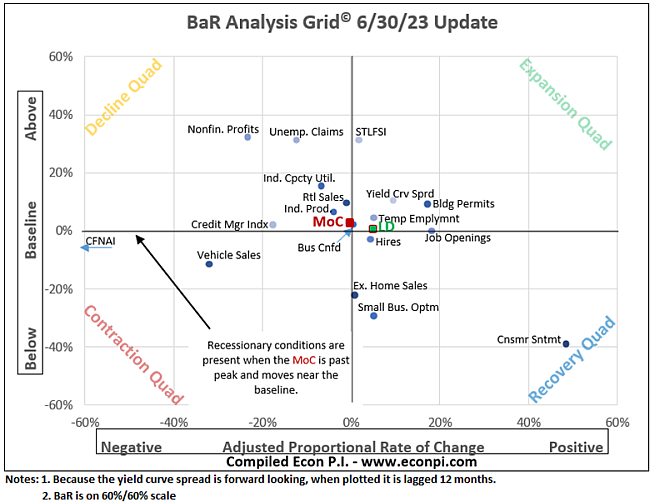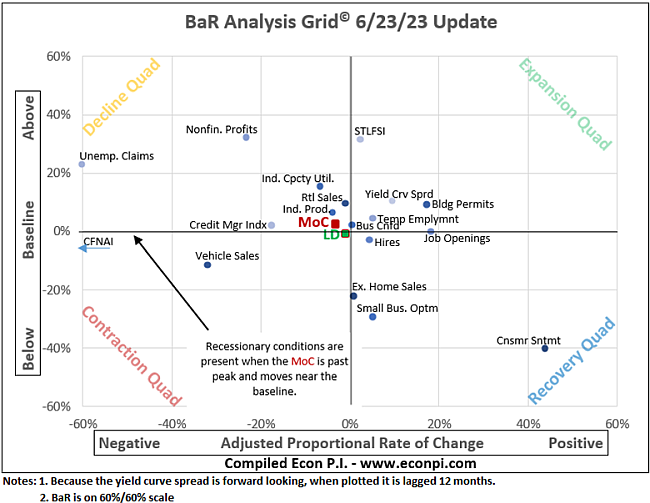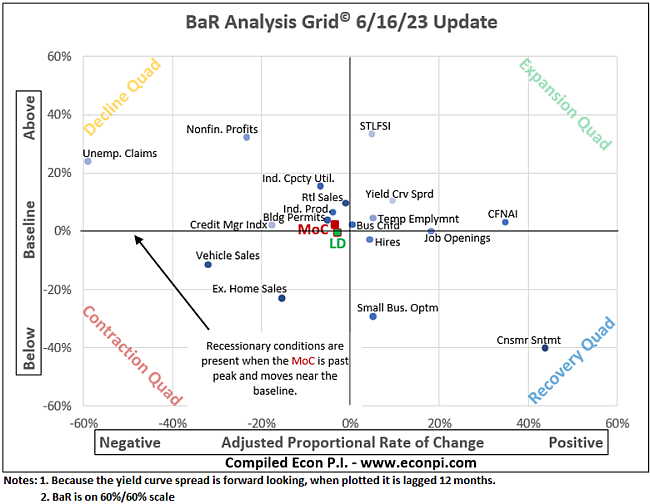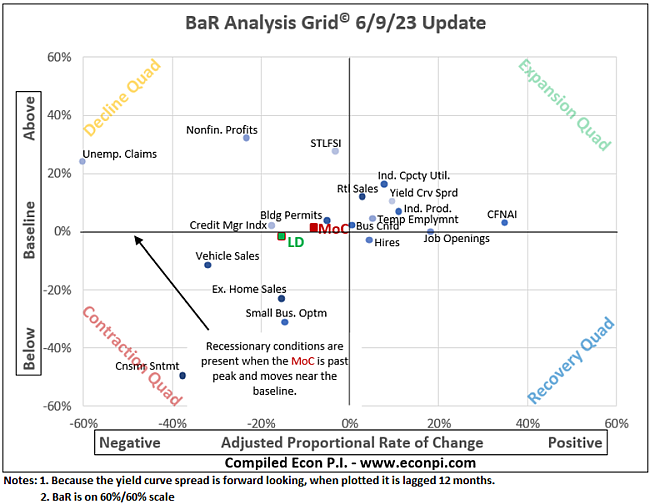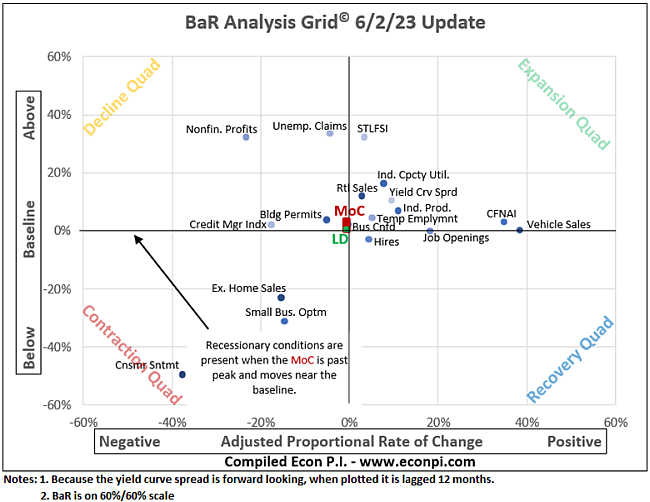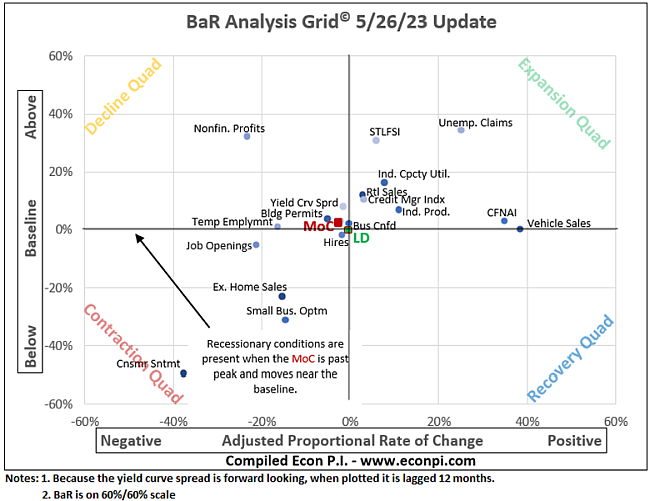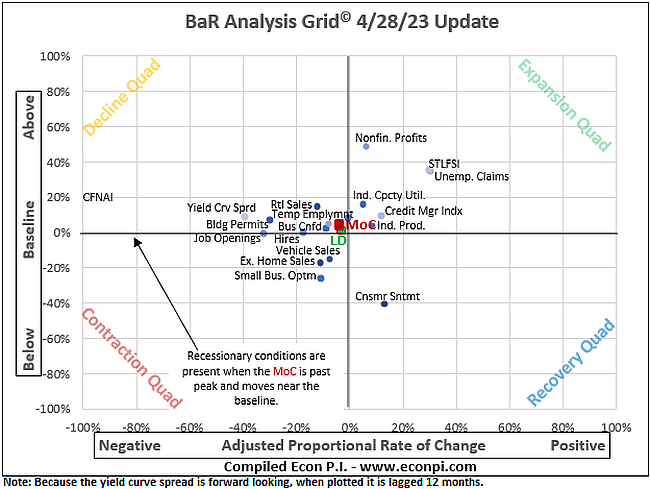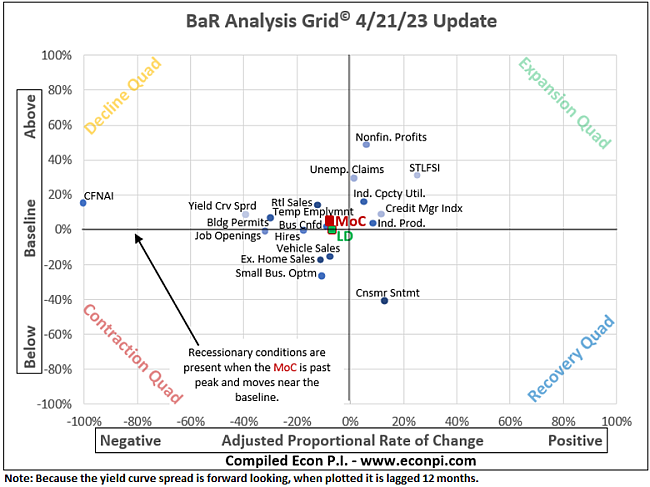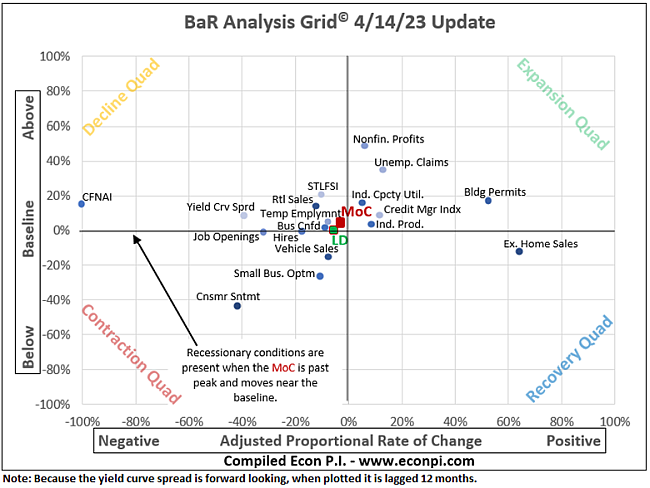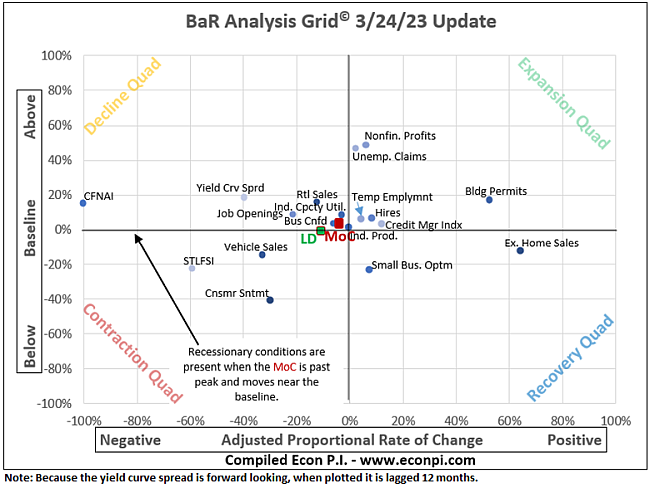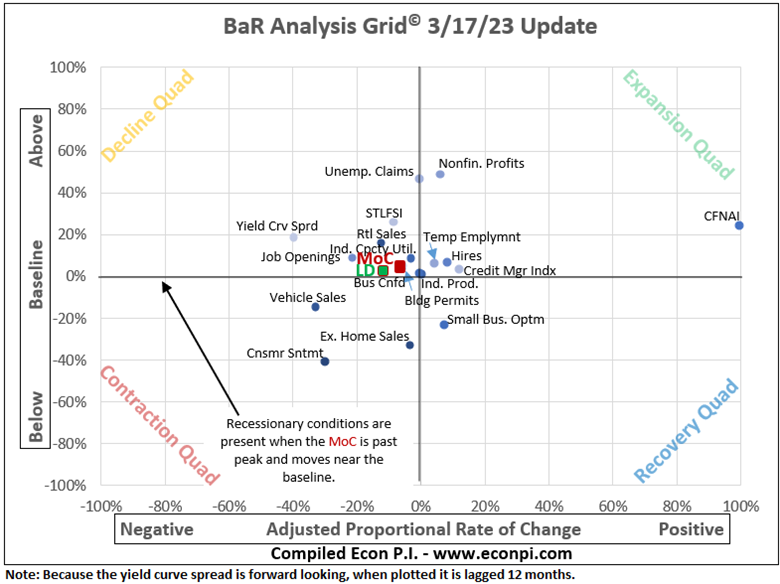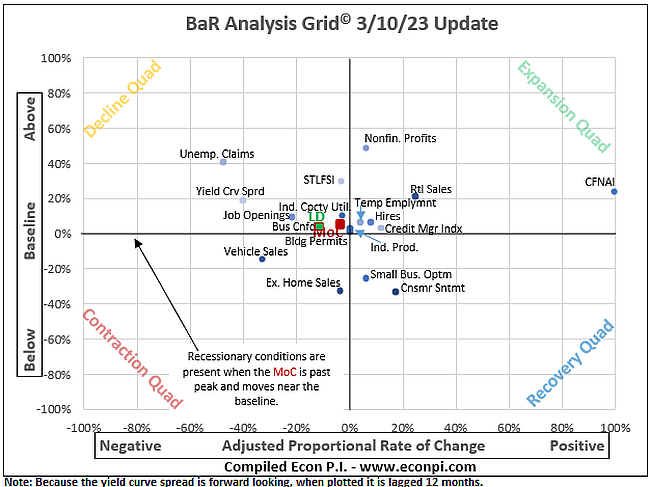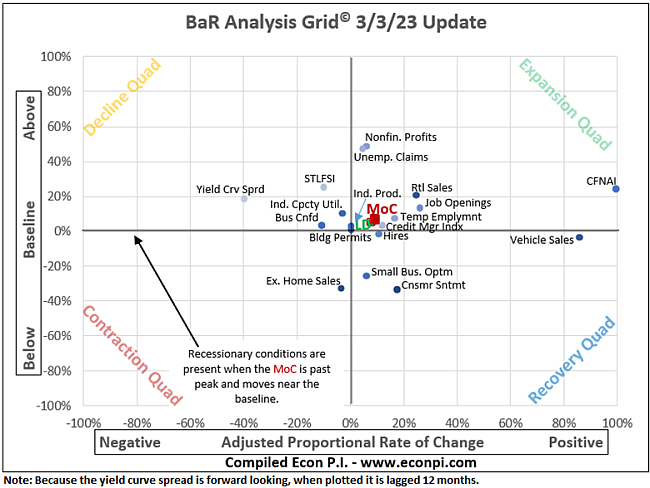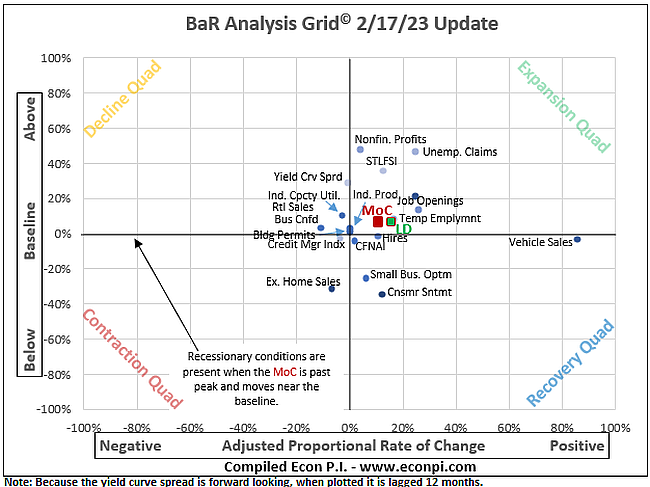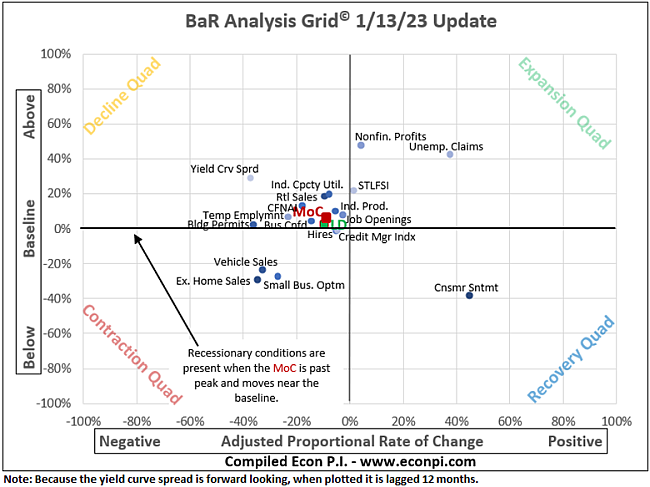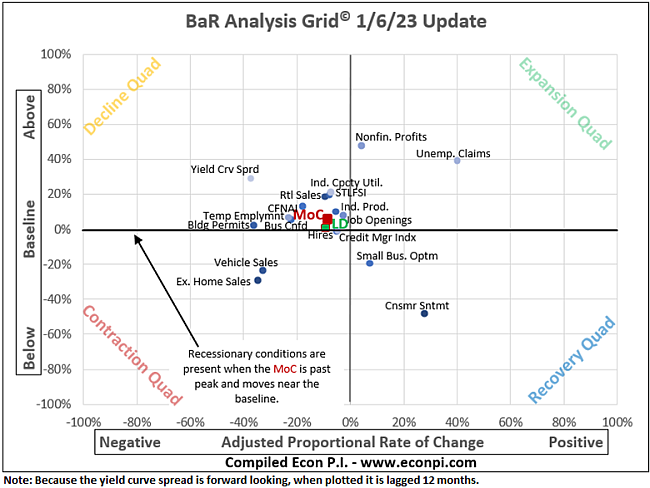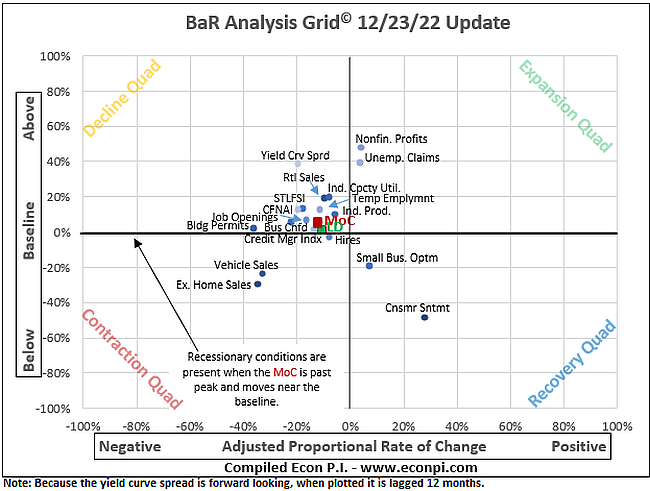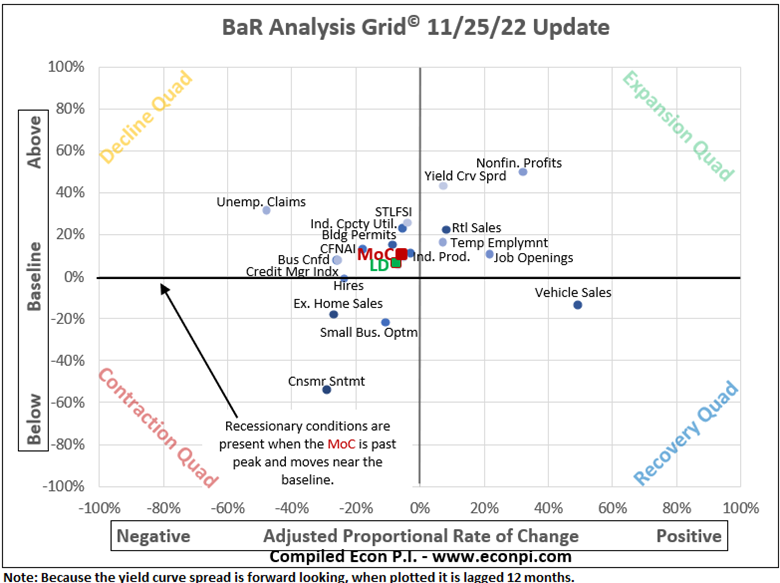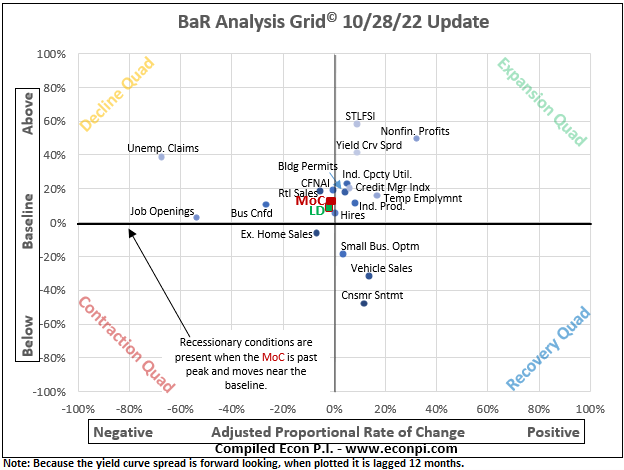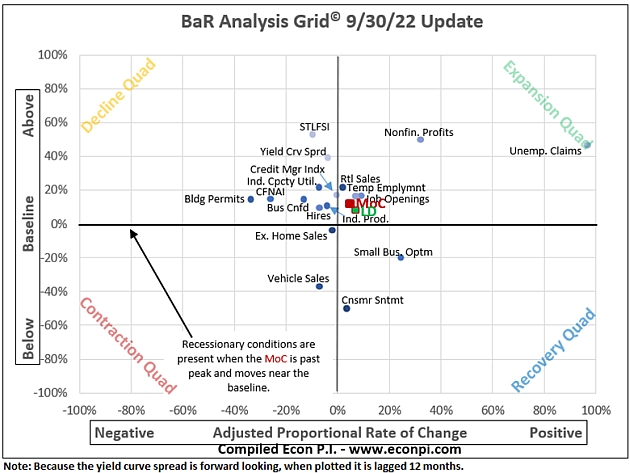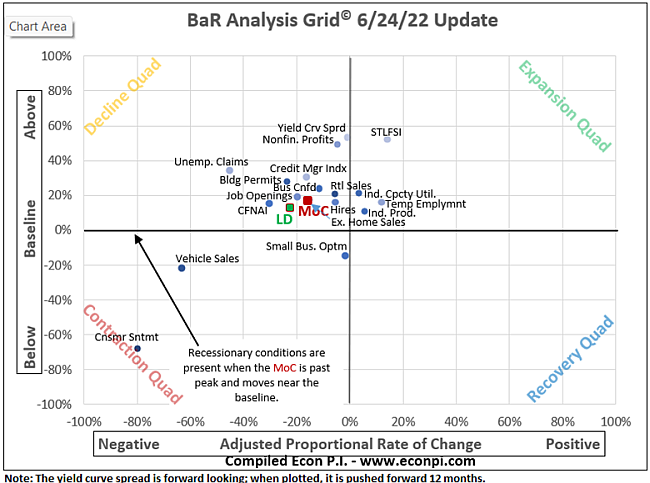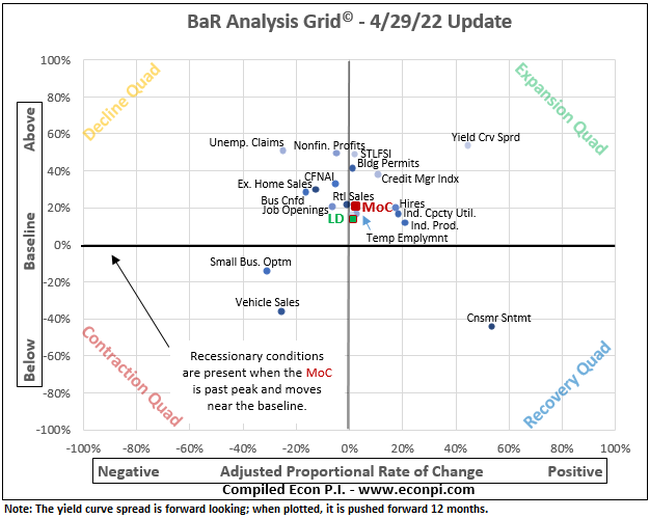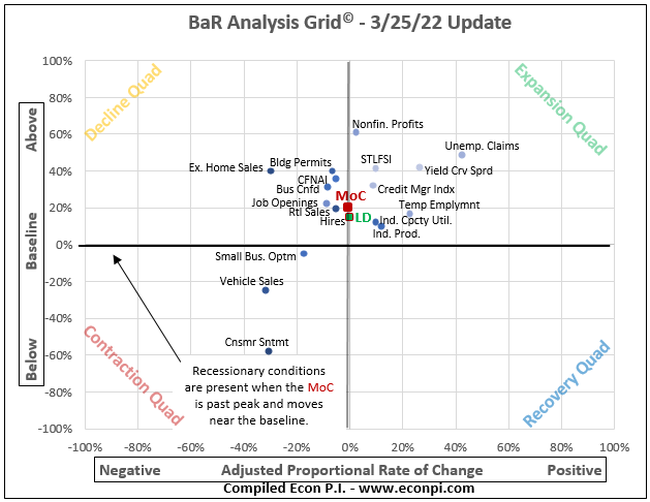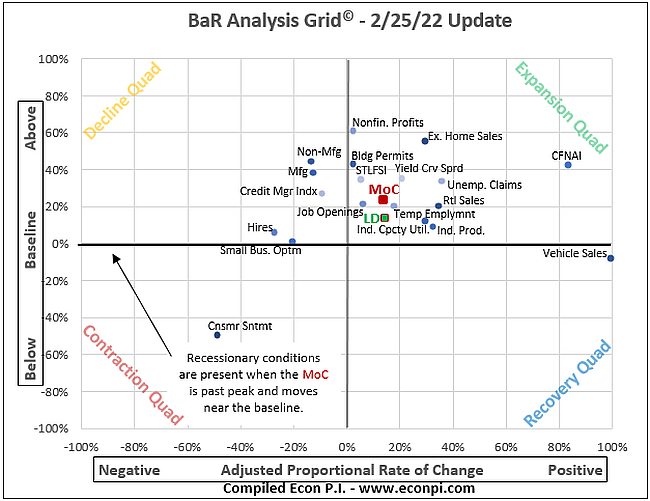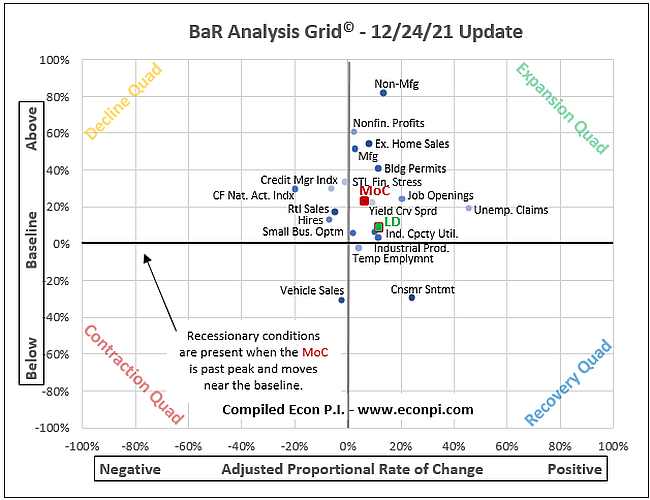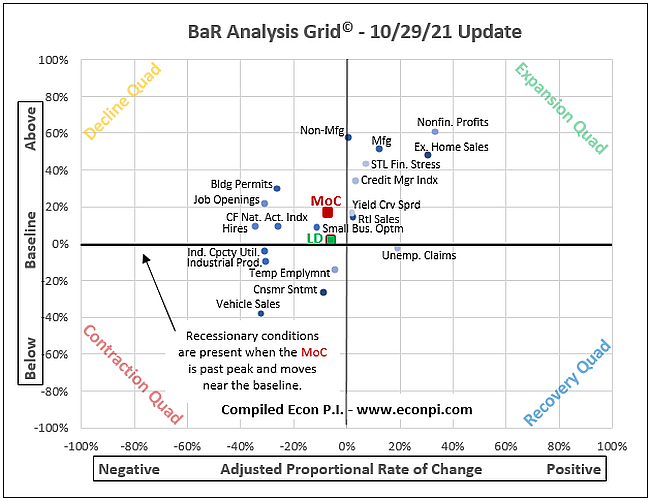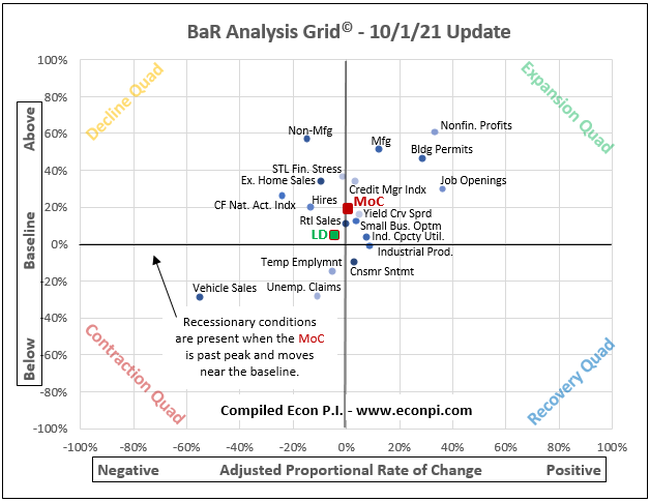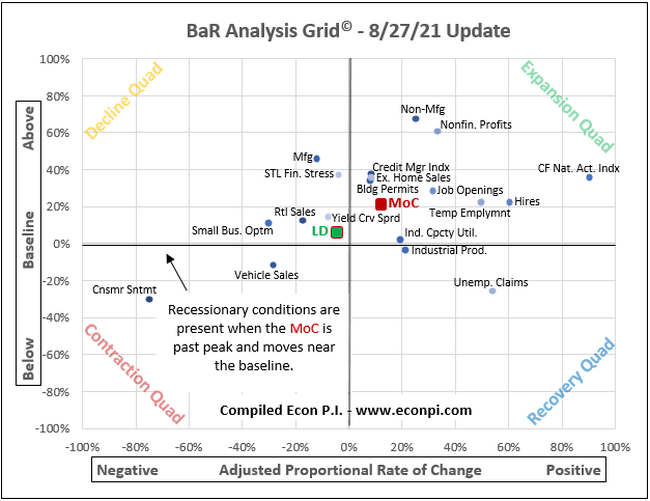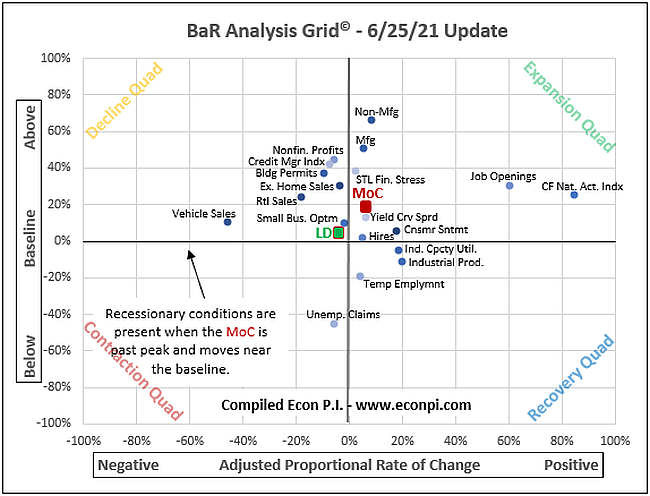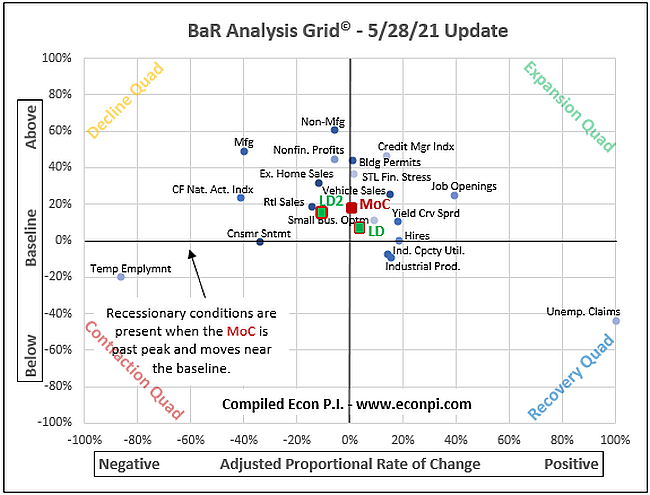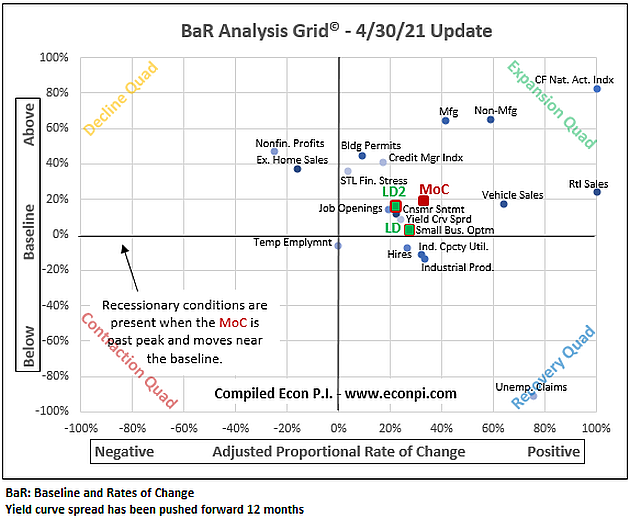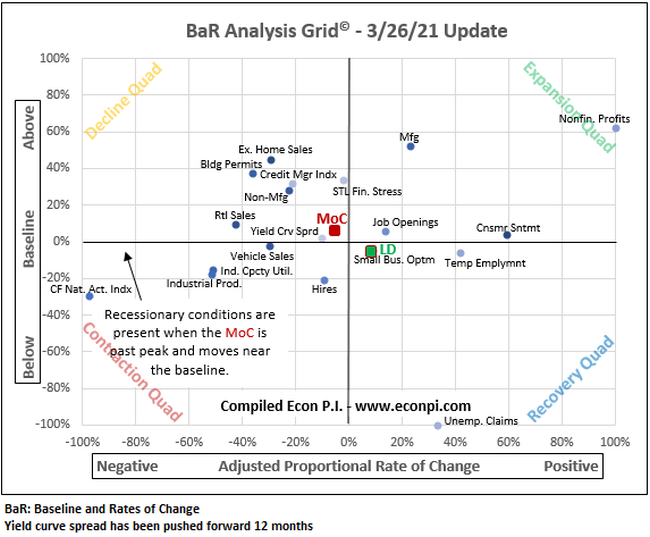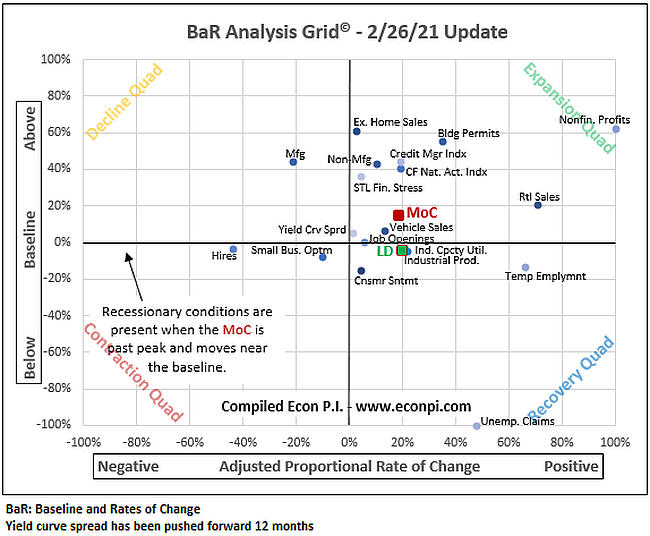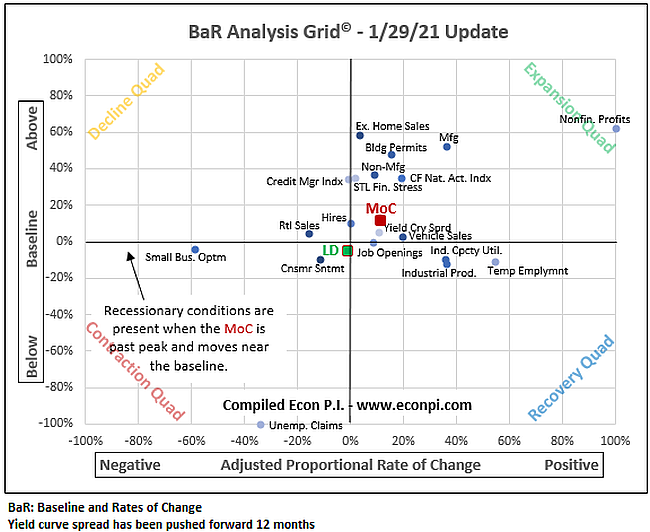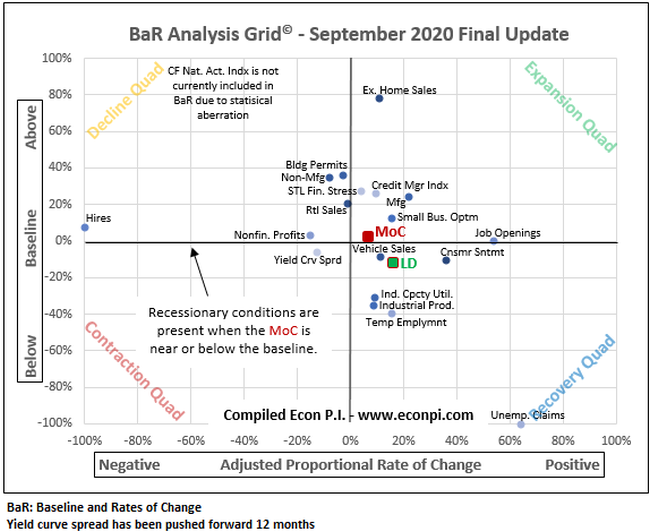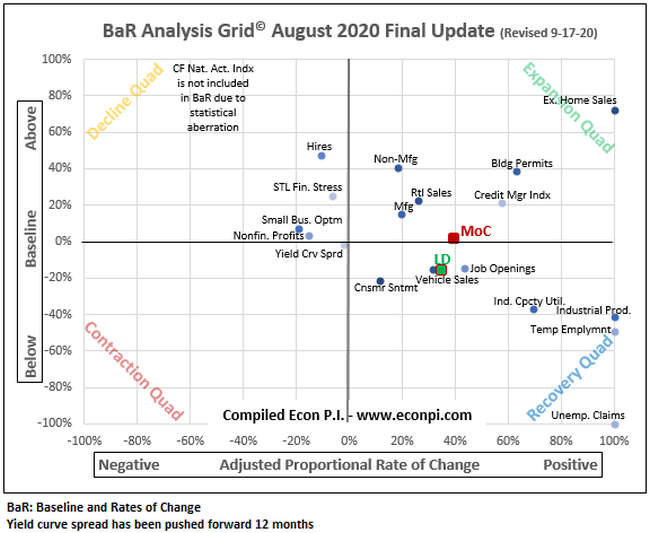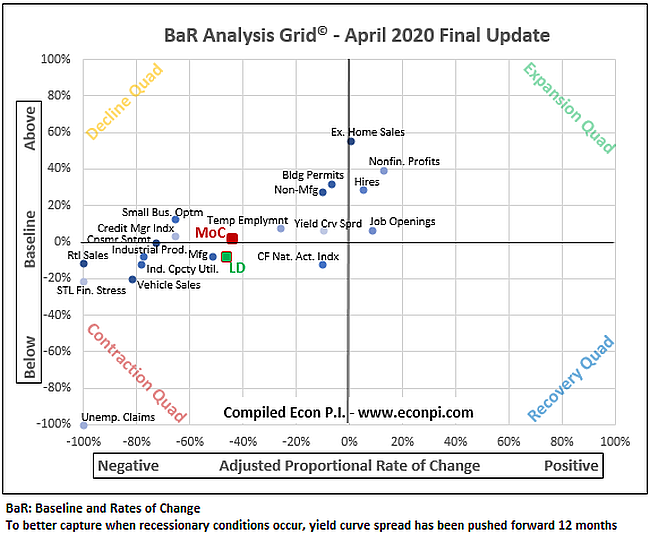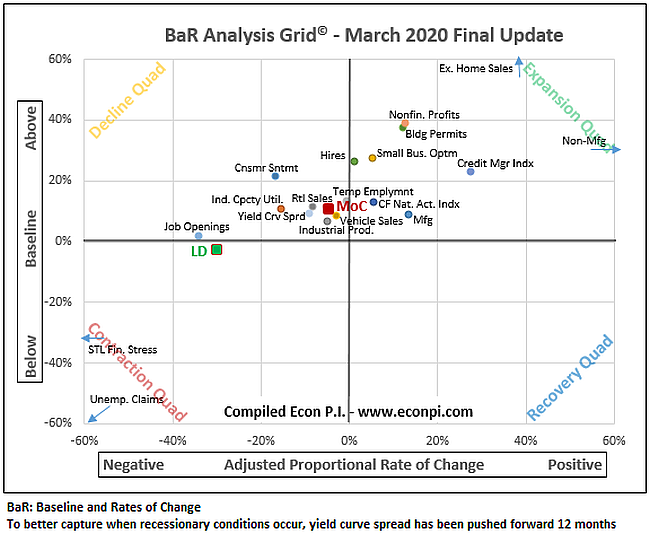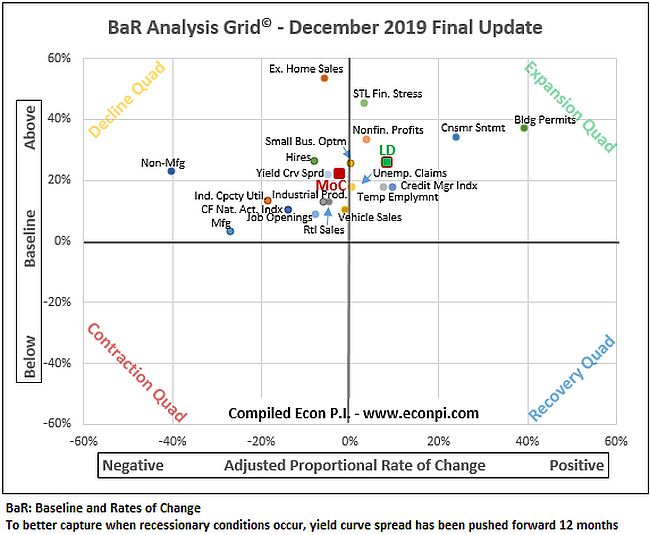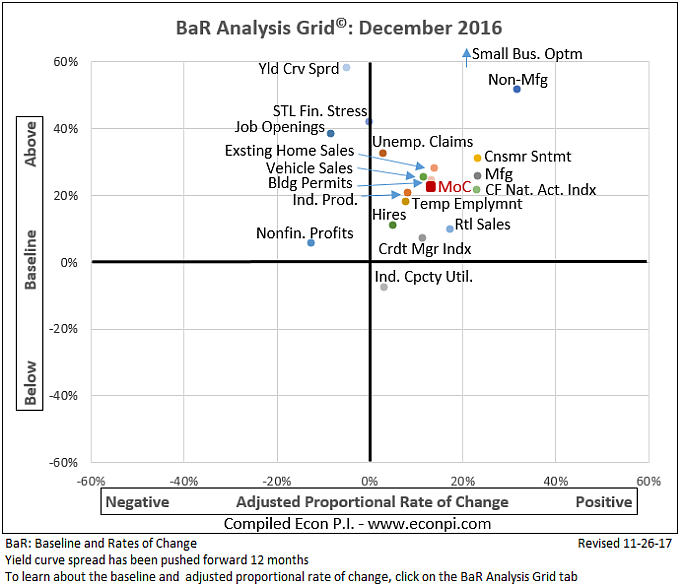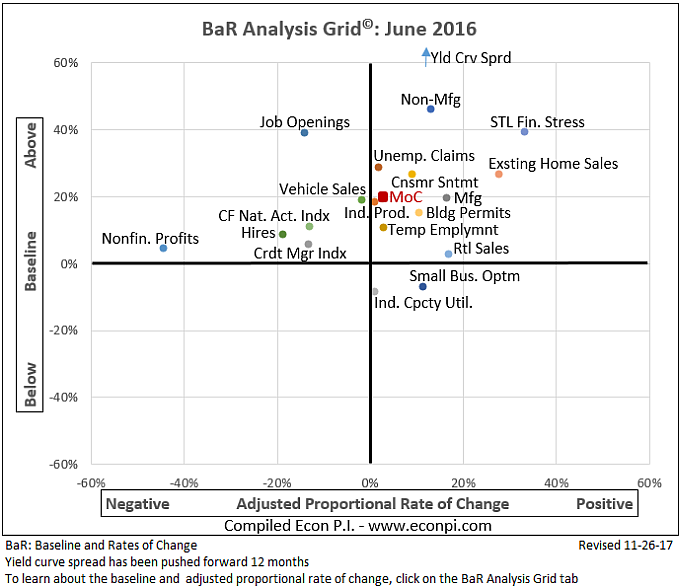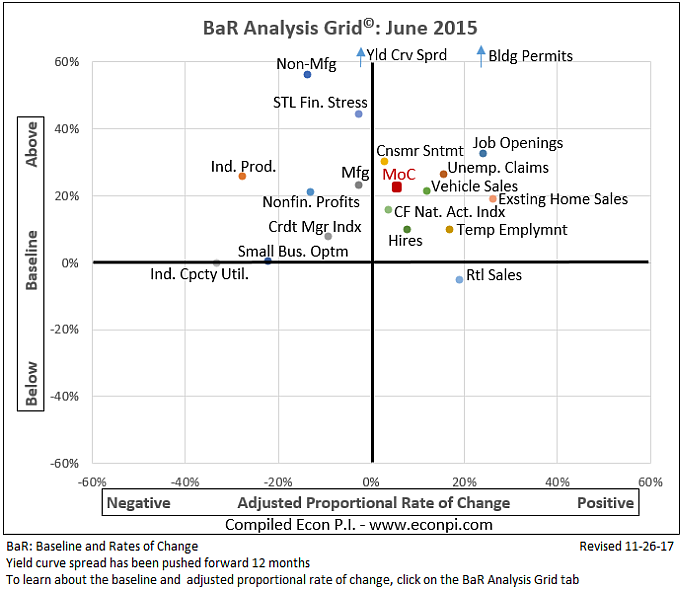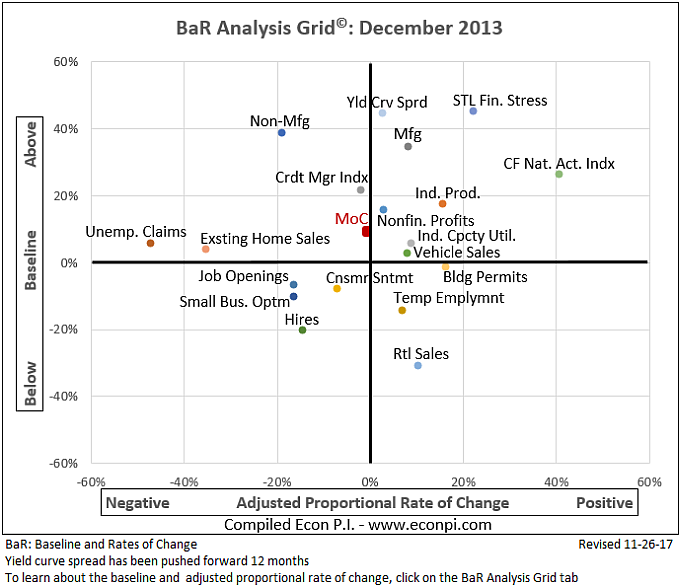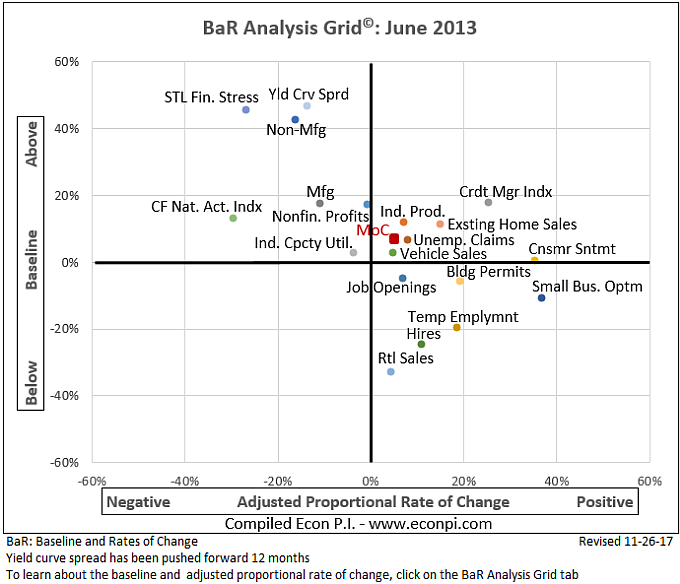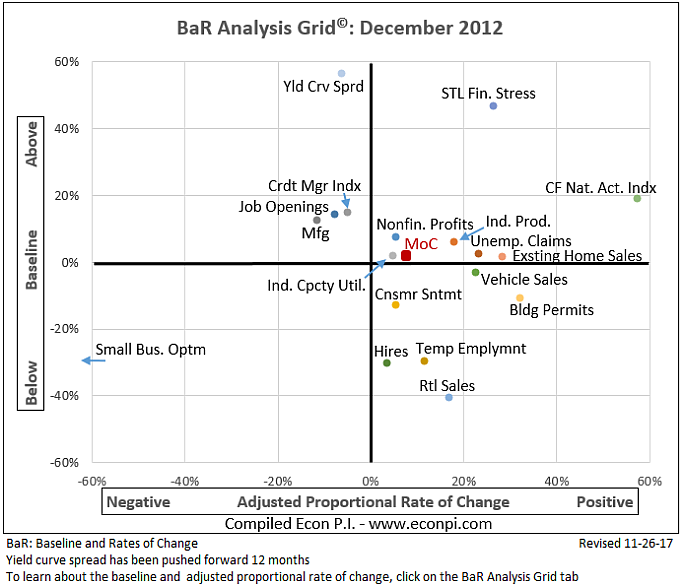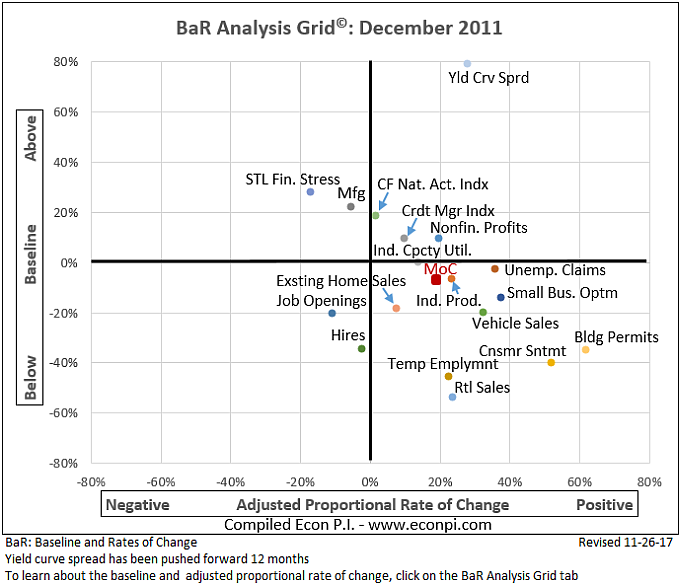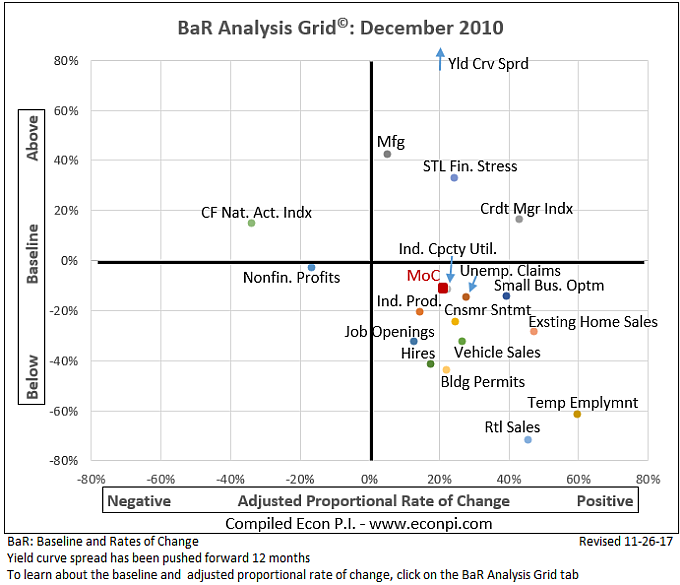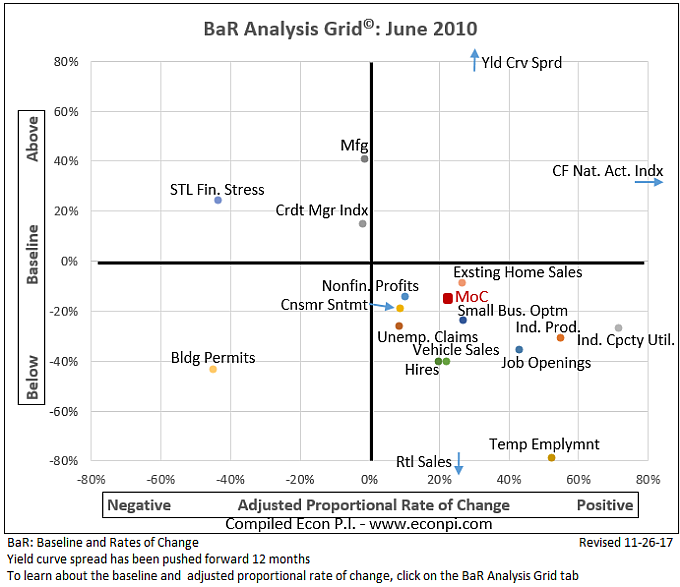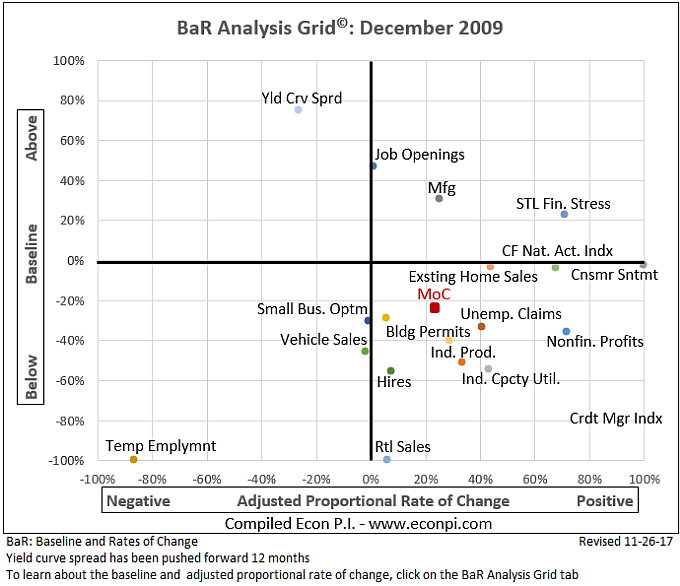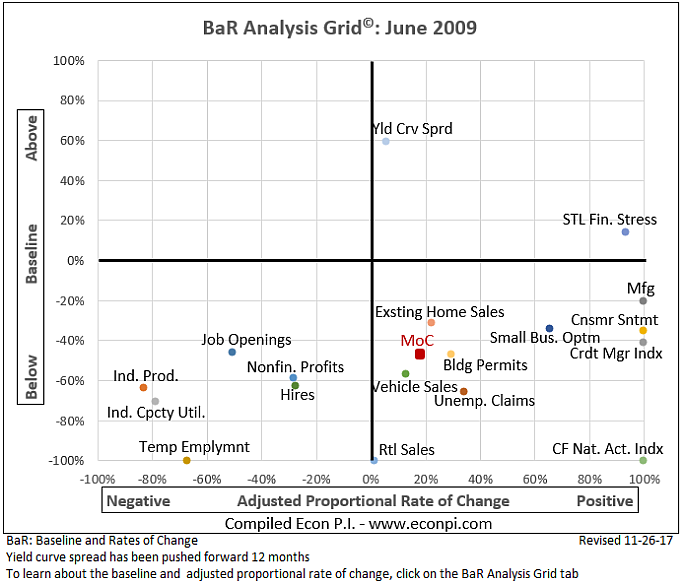| Baseline and Rate of Change (BaR) Analysis Grid© |
By plotting 18 key economic indicators, the BaR captures economic activity, sentiment, and outlook at a given period of time. The BaR:
- Arranges data in a meaningful, understandable pattern.
- Sets a baseline that is an estimation of where each indicator is likely to be when a recession hits. Charts of the indicators and their baselines are shown here.
- Calculates the mean of coordinates (MoC), the average of all plotted points, which shows the general state of the economy. The MoC is especially useful for determining when a recession is near and comparing grids from different periods of time.
- Calculates a subset of nine leading indicators (LD) that gives an initial indication of changing economic trends. Five of the leading indicators are updated within the first week of a month, giving the earliest indications of emerging trends.
|
The economy is expanding when the MoC shifts to the right and moves upward. The economy is slowing when the MoC shifts to the left and moves downward.
|
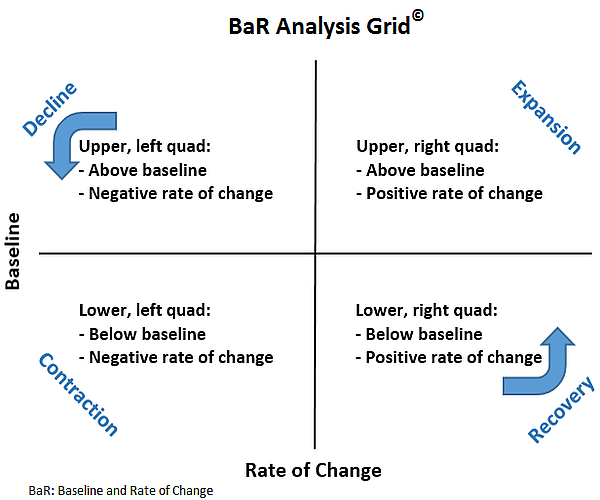 |
How to Read the BaR |
Positive economic growth
The BaR indicates expanding economic growth when the majority of the plotted economic indicators (blue points) and the MoC (mean of coordinates - red point) are in the expansion quadrant and well above the baseline.

|
Positive, but slowing economic growth
Economic growth is cyclical. During an expansion cycle, indicators hits new highs, then stall or decline slightly, then move upward again. This can result in a number of economic indicators moving into the decline quadrant and the MoC shifting leftward. With such a movement, as long as the MoC and the economic indicators remain above the baseline, the economy is still growing, but at a decreasing rate of growth.
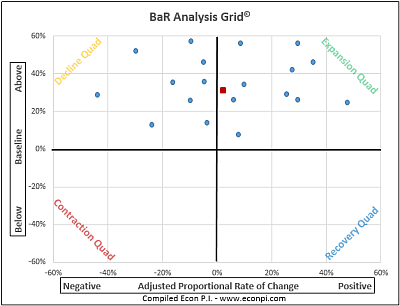 |
| For example, a drop in building permits from 1.36 million to 1.30 million would be a decrease in the rate of change. Although growth is still positive (1.30 million permits were issued), the rate of change is negative. The indicator would be plotted in the decline quadrant. All indicators periodically move into the decline quadrant, even as the economy is expanding. A red flag is raised when an increasing number of indicators stay predominately in the decline quadrant and move closer to the baseline. |
Slowing economic growth, pre-peak or post-peak
Even when the economy is growing, due to the cyclical nature of the economy, the MoC and a majority, or near majority, of economic indicators may occasionally move into the decline quadrant. During periods of economic growth, this will be temporary. The MoC and most indicators will move back into the expansion quadrant. However, if the economy has peaked, a grid like the one shown below is a pre-recessionary pattern. As the economy slows, the MoC will mostly stay in the decline quadrant and gradually move towards the baseline.

|
Stalling economic growth
When the MoC mostly stays in the decline quadrant and several economic indicators are nearing or have gone below the baseline, this indicates that the economy is stalling. Although the economy can recover briefly, and the MoC may shift to the expansion quadrant, this will be temporary. The economy is still growing, but at a declining rate.
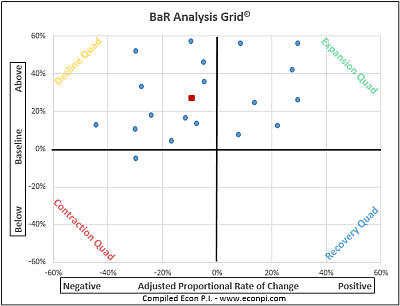
|
Nearing economic recession
After the economy has peaked and the MoC has mostly remained in the decline quadrant, as more and more economic indicators near or go below the baseline, this indicates that recessionary conditions are building. Here too, the economy is growing, but it has slowed significantly.

|
Economic recession
When the MoC nears or goes below the baseline, this generally indicates that the economy has begun a recession. If a recession has not begun, the economy is highly vulnerable to one.
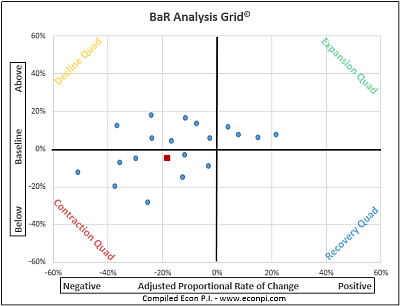
|
Economic recovery
When a recession ends, the MoC and most indicators will move into the recovery quadrant. However, again due to the cyclical nature of the economy, during recovery the MoC can shift into the contraction quadrant occasionally. This is usually temporary, but it does indicate there is some economic vulnerability during a recovery.
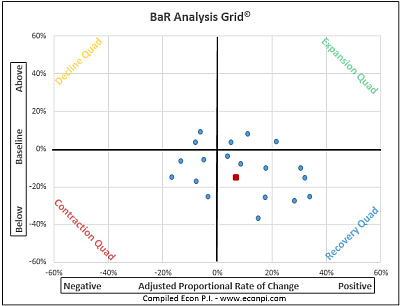
|
|
Rate of Change
The data for most economic indicators are updated monthly. Two leading indicators are updated weekly and compared to the ending data of the previous month. Corporate profits are reported and updated quarterly.
The rate of change is adjusted by the "range of change" when indicators are plotted on the BaR Analysis Grid©. For example, the largest monthly range of change for private building permits since 1977 was 30% (this excludes months with extreme variations). For a month with a rate of change of 10%, the rate of change plotted on the BaR for building permits would be 33% (10% divided by 30%). This method gives all plotted indicators a base of 100 (33% = 33 / 100 = proportion / base]). For an indicator with a range of change of 15% that had a monthy rate of change of 5%, it too would be plotted with a 33% change (5% divided by 15%; resulting in a base of 100). With this methodology, each indicator, except one, has an equal influence on the MoC (read more in the FAQs). The exception is the Chicago Fed National Activity Index. Since the pandemic economic shutdown, the CFNAI often has large data swings from month to month. For this reason, its influence on the MoC has been decreased.
Baselines
Baselines are intended to show where an indicator is likely to be when a recession begins. Each indicator's baseline is determined by its unique characteristics and historical trends prior to recessions. Like the rate of change, the baseline percentages are also proportionally adjusted when plotted, based on each indicators unique range of high and low values during a business cycle. Charts of the economic indicators and their baselines can be seen here.
|
 |
